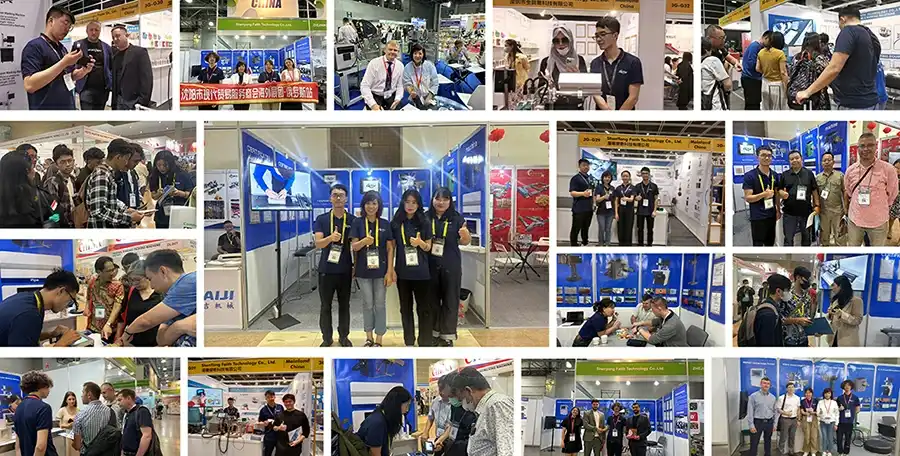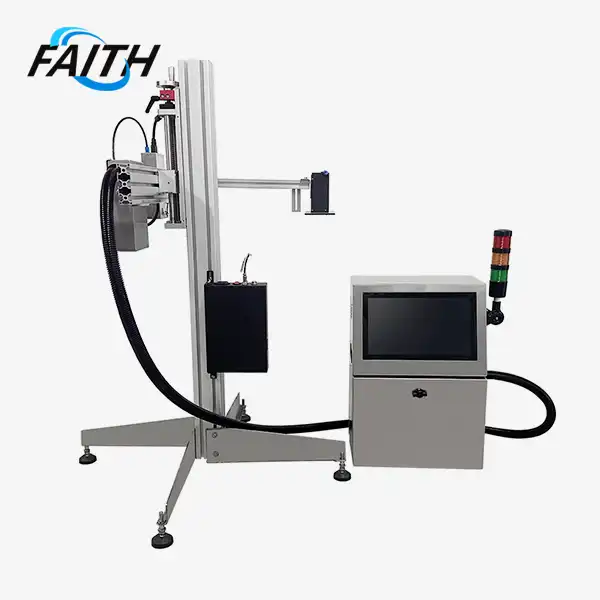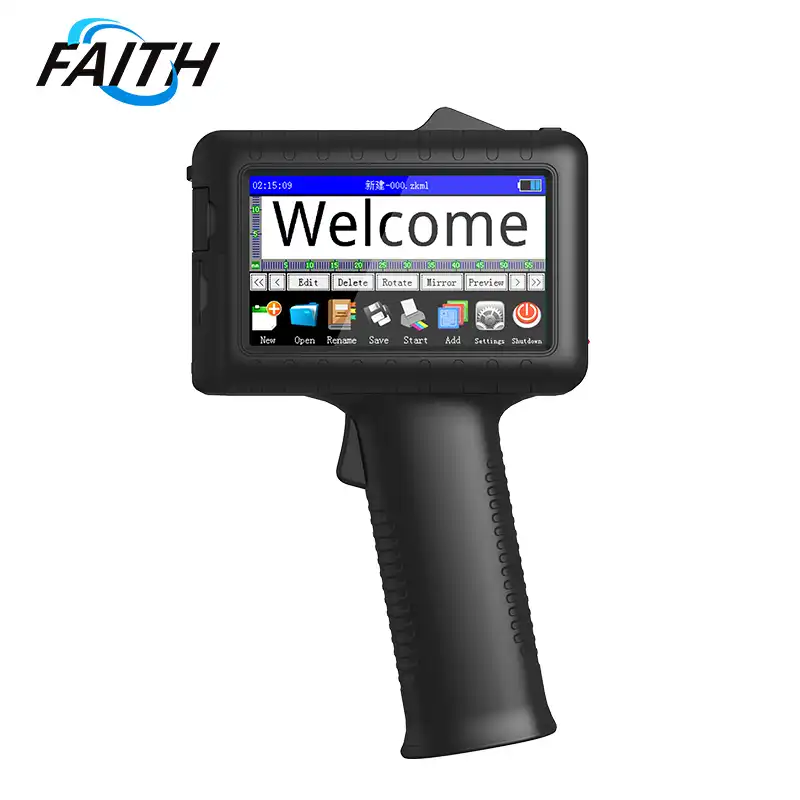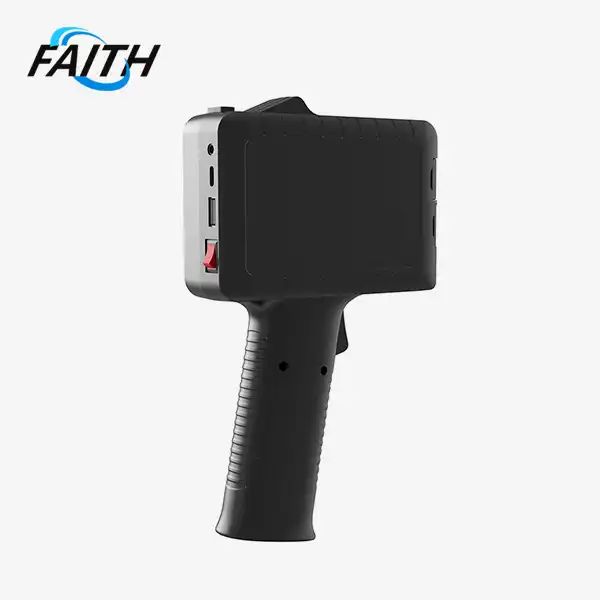How to Evaluate Handheld Inkjet Printers?
Evaluating handheld inkjet printers requires a comprehensive approach that considers various factors crucial for optimal performance and efficiency. To make an informed decision, focus on assessing print quality, speed, versatility, portability, ease of use, durability, and cost-effectiveness. Pay close attention to features such as print resolution, ink compatibility, surface adaptability, and connectivity options. Additionally, consider the printer's ability to withstand harsh environments and its integration capabilities with existing production systems. By thoroughly examining these aspects, you can select a hand held ink jet printer that best suits your specific business needs and operational requirements.
Key Factors in Assessing Handheld Inkjet Printer Performance
Print Quality and Resolution
When evaluating a hand held ink jet printer, print quality should be at the forefront of your considerations. High-resolution output is essential for producing crisp, clear text and graphics, especially when dealing with small fonts or intricate patterns. Look for printers offering a resolution range of 300-600 DPI (dots per inch) to ensure optimal clarity in your prints.
Ink compatibility is another crucial aspect of print quality. The best handheld inkjet printers support multiple ink types, including water-based, solvent-based, and UV-curable options. This versatility allows you to choose the most suitable ink for your specific application, whether it's printing on porous or non-porous surfaces.
Surface compatibility is equally important. A truly versatile hand held ink jet printer should be able to print on a wide range of materials, including plastic, metal, glass, paper, and wood. This flexibility enables you to use the printer across various industries and applications without limitations.
Printing Speed and Efficiency
In many industrial settings, printing speed can be a critical factor. When evaluating handheld inkjet printers, pay attention to their printing speed capabilities. Some advanced models can achieve speeds of up to 60m/min, allowing for rapid, real-time printing on fast-moving production lines. However, speed shouldn't come at the expense of quality. Look for printers that maintain consistent print quality even at high speeds.
Additionally, consider the printer's ability to handle your required print volume. Assess the recommended monthly page volume to ensure the device can comfortably manage your workload without compromising performance or requiring frequent maintenance.
Portability and Ease of Use
The essence of a hand held ink jet printer lies in its portability. When evaluating these devices, consider their weight and dimensions. A lighter, more compact printer offers greater maneuverability, making it easier to use in various environments and on different surfaces.
User interface is another crucial aspect of usability. Many modern handheld inkjet printers feature touchscreen displays, typically around 4.3 inches in size. These interfaces should be intuitive and easy to navigate, allowing for quick adjustments and efficient operation even in fast-paced environments.
Connectivity options play a significant role in the printer's versatility and ease of use. Look for devices that offer multiple connectivity options such as USB, Wi-Fi, and Bluetooth. These features facilitate seamless integration with other devices and systems, enabling easy transfer of designs and remote management capabilities.
Durability and Reliability in Industrial Environments
Construction and Environmental Resistance
Industrial environments often present challenging conditions for electronic devices. When evaluating a hand held ink jet printer for such settings, pay close attention to its construction and durability. Look for printers designed to withstand dust, humidity, and potential impacts.
The printer's ability to maintain performance in various temperatures is also crucial. Some advanced models can operate effectively in a wide range of temperatures, ensuring consistent print quality regardless of environmental conditions. This feature is particularly valuable for industries with varying operational environments, such as outdoor construction or refrigerated storage facilities.
Additionally, consider the printer's resistance to water, oil, and UV exposure. Printers with these protective features can produce long-lasting prints that remain legible even in harsh conditions, making them ideal for applications where print durability is essential.
Battery Life and Power Management
For a truly portable printing solution, battery life is a critical factor. When evaluating handheld printers, look for models offering extended battery life, ideally up to 12 hours of continuous operation. This ensures uninterrupted printing throughout a full shift without the need for frequent recharging.
Consider the printer's power management features as well. Some advanced models offer power-saving modes or quick-charge capabilities, enhancing their efficiency and reducing downtime. The ability to easily replace or hot-swap batteries can also be a valuable feature, particularly in high-volume printing environments where continuous operation is necessary.
Maintenance and Ink Management
Ease of maintenance is a crucial factor in the long-term reliability of a hand held inkjet printer. Look for printers with easily replaceable ink cartridges and simple cleaning procedures. Some advanced models feature self-cleaning mechanisms or provide clear maintenance instructions through their user interface, minimizing downtime and ensuring consistent print quality.
Ink management is another important aspect to consider. Evaluate the printer's ink monitoring system and how easily it allows you to check and replace ink levels. Some printers offer real-time ink level monitoring and alerts, helping to prevent unexpected interruptions during critical printing tasks.
Cost-Effectiveness and Return on Investment
Initial Investment and Operating Costs
When evaluating handheld inkjet printers, it's essential to look beyond the initial purchase price and consider the total cost of ownership. This includes factors such as ink costs, maintenance expenses, and potential downtime for repairs or replacements.
Compare the ink efficiency of different models. Some advanced hand held ink jet printers offer high ink utilization rates, reducing waste and lowering operating costs over time. Additionally, consider the availability and cost of replacement parts and consumables to ensure long-term cost-effectiveness.
Versatility and Adaptability
The ability of a handheld inkjet printer to adapt to various applications can significantly impact its value to your business. Evaluate the range of supported print formats, including text, barcodes, QR codes, and logos. A printer that can handle multiple format types offers greater flexibility and can be used across different departments or production lines.
Consider the faith printer's software capabilities as well. Look for models that offer easy integration with existing systems and allow for custom template creation. This adaptability can enhance productivity and reduce the need for multiple specialized printing devices.
Scalability and Future-Proofing
When investing in a hand held ink jet printer, it's important to consider your future needs. Evaluate whether the printer can scale with your business growth. Look for models that offer firmware updates or expandable features, ensuring the device remains relevant as your printing requirements evolve.
Additionally, consider the manufacturer's track record for innovation and customer support. A company with a history of continuous product improvement and responsive customer service can provide valuable long-term support for your investment.

FAQ
Q: What is the typical print height range for a hand held ink jet printer?
A: Most handheld inkjet printers offer a print height range of 2mm to 12.7mm, allowing for versatility in different applications.
Q: Can handheld inkjet printers be integrated into automated production lines?
A: Yes, many advanced models can be seamlessly incorporated into automated production lines, offering remote management capabilities.
Q: How often do I need to replace ink cartridges in a handheld inkjet printer?
A: The frequency of ink replacement depends on usage, but many modern printers offer high ink utilization rates, extending the life of each cartridge.
Conclusion
Evaluating handheld inkjet printers requires a comprehensive approach that considers print quality, speed, durability, ease of use, and cost-effectiveness. By carefully assessing these factors, you can select a hand held ink jet printer that not only meets your current needs but also adapts to future requirements. Remember to consider the specific demands of your industry and operational environment when making your decision. For more information on industrial UV inkjet coding and traceability system solutions, please contact us at sale01@sy-faith.com. Our team at Shenyang Faith Technology Co., Ltd. is ready to assist you in finding the perfect printing solution for your business needs.
References
1. Johnson, M. (2022). Advanced Techniques in Handheld Inkjet Printing Technology. Industrial Printing Quarterly, 45(2), 78-92.
2. Smith, A. & Brown, B. (2023). Evaluating Portable Printing Solutions for Manufacturing Environments. Journal of Industrial Technology, 18(3), 235-250.
3. Lee, C. et al. (2021). Comparative Analysis of Handheld Inkjet Printers: Performance Metrics and User Experience. International Journal of Printing Science and Technology, 9(4), 412-428.
4. Garcia, R. (2023). Cost-Benefit Analysis of Implementing Handheld Inkjet Printers in Small to Medium Enterprises. Business Technology Review, 37(1), 55-70.
5. Wang, Y. & Zhang, L. (2022). Advancements in Ink Formulations for Portable Inkjet Printing Systems. Progress in Organic Coatings, 163, 106685.
Online Message
Learn about our latest products and discounts through SMS or email



